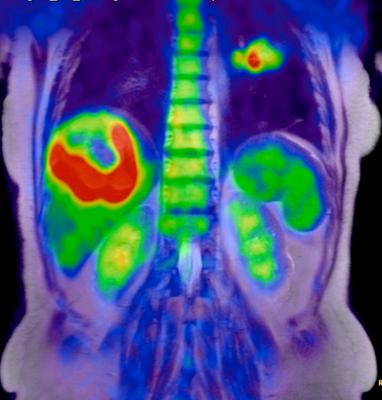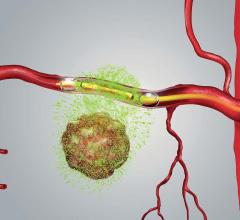
October 28, 2016 — The National Academies of Sciences, Engineering, and Medicine (NAS) have released a report on the state of molybdenum-99 (Mo-99) production, its utilization in medicine, and progress toward eliminating the use of highly enriched uranium (HEU) during production.
The report was mandated by the American Medical Isotopes Production Act of 2012 and says, “The committee judges that there is a substantial (>50 percent) likelihood of severe molybdenum-99/technetium-99m supply shortages after October 2016, lasting at least until current global suppliers complete their planned capacity expansions.”
Mo-99 is used to produce Tc-99m, the most commonly used radioisotope worldwide (about half in the United States). The production and supply of radioisotopes iodine-131 (I-131) and xenon-133 (Xe-133) are also a concern.
Shortages of Mo-99 in recent years, due to reliance on aging reactors outside the United States, have led to major efforts around the globe to ensure a reliable supply. Since a major shortage of Mo-99 occurred in 2009, there has been pessimism about meeting future needs for Tc-99m.
The NAS report points out that 75 percent of the global supply of Mo-99 for medical use is produced using HEU targets; the remaining 25 percent is produced with low enriched uranium (LEU targets).
The U.S. Department of Energy’s National Nuclear Security Administration (DOE/NNSA) is providing matching funding opportunities for research and development of domestic Mo-99 production methods that do not use HEU. Four NNSA-supported projects are currently underway, and each project is intended to supply half or more of U.S. needs. However, the report states that substantial domestic supplies are unlikely to be available before 2018 due to technical, financial, regulatory and market challenges.
The study recommends that the U.S. government continue to work with the Canadian government to ensure that a plan is in place to restart Canadian supply if needed. Canada has said it will keep its reactor on stand-by until the end of March 2018, when it will shut down permanently.
Progress is being made toward eliminating the use of HEU for medical isotope production; global Mo-99 suppliers have committed to eliminating HEU use in reactor targets and medical isotope production facilities, and financial support from NNSA and technical support from U.S. national laboratories are facilitating domestic production efforts. However, the continued availability of Mo-99 produced with HEU is an impediment. Companies using LEU find themselves at a competitive disadvantage.
The NAS report recommends that the U.S. government and others should take additional actions to promote the wider use of non-HEU produced Mo-99/Tc-99m.
The report outlines additional steps that could be taken:
- The Centers for Medicare & Medicaid Services (CMS) could continue to offer the $10 add-on reimbursement for Tc-99m from non-HEU sources until HEU sources are no longer available in the U.S. CMS could also accelerate the retrospective analysis of the costs of medical procedure that utilize Tc-99m from non-HEU sources;
- NNSA could examine options to eliminate the availability of HEU targets for Mo-99 production to shorten the transition process. It might buy back U.S. origin HEU in raw or target form from global Mo-99 suppliers, once production with LEU targets is well established;
- Technetium generator manufacturers and nuclear pharmacies could continue efforts to further increase the use of Mo-99 from non-HEU sources; and
- The U.S. Congress could restrict, or place financial penalties on, the import of Mo-99 produced with HEU targets (once non-HEU sources are widely available).
Society of Nuclear Medicine and Molecular Imaging (SNMMI) President Sally W. Schwarz, MS, RPh, BCNP, professor of radiology at Washington University School of Medicine in St. Louis, agrees in general with the report’s assessment and also noted, “Development of these new, non-HEU production methods is costly, even when shared with governments. It will take time and incremental changes to reach a balance point of fair reimbursement for increased costs for all members of the supply chain including Mo-99 producers, generator manufacturers, nuclear pharmacies, hospitals and patients.”
Schwarz cautioned that the potential for short-term shortages is a real concern, but the global Mo-99 producers, processors and generator manufacturers, working with AIPES, will strive to manage any interim shortage problems that might occur.
She is optimistic overall about Mo-99/Tc-99m production through non-HEU means and the development of a domestic source of Mo-99. “The innovative, safer production methods and facilities that will be coming online over the next few years will certainly help ensure a safe, reliable supply of Mo-99.”
Read the 2017 article "FDA Clears Path for First Domestic Supply of Tc-99m Isotope."
For more information: www.snmmi.org


 April 10, 2024
April 10, 2024 





![(A) PET images of [68Ga]Ga-DOTA-ZCAM241 uptake at baseline and 3, 7, and 12 days after injection as inflammatory arthritis developed in single representative individual mouse. Images are normalized to SUV of 0.5 for direct comparison between time points. (B) CD69 immunofluorescence Sytox (Thermo Fisher Scientific) staining of joints of representative animals during matching time points.](/sites/default/files/styles/feed_medium/public/PET%20Tracers.jpeg?itok=P5Di6MIe)


